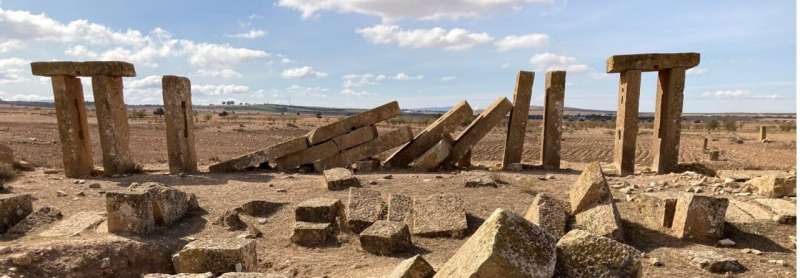Excavations in the Kasserine region of Tunisia have uncovered what is now recognized as the second-largest olive oil mill in the Roman Empire. The project, led by Ca’ Foscari University of Venice, focuses on the area of ancient Roman Cillium, which borders present-day Algeria. This significant find includes two olive pressing facilities, known as torcularia, with one mill displaying monumental features that underscore its historical importance.
The archaeological mission, co-directed by Prof. Luigi Sperti from Ca’ Foscari, has been active since 2025. Researchers are studying two ancient olive farms located in the heart of the Jebel Semmama massif. The region’s high steppes and continental climate, characterized by significant temperature variations and limited rainfall, created ideal conditions for olive cultivation. Olive oil was a crucial resource for the economy of Roman Africa, making Tunisia an essential supplier to Rome.
Significance of the Excavation Sites
Among the key sites being investigated is Henchir el Begar, identified as the ancient Saltus Beguensis. This location served as the center of a substantial rural estate during the 2nd century AD and belonged to the notable figure Lucillius Africanus. The site is distinguished by a significant Latin inscription dating back to 138 AD, which records a senate consultation permitting the establishment of a bimonthly market—an event of great importance in the period’s social, political, and religious life.
The settlement spans approximately 33 hectares, featuring two main sectors, Hr Begar 1 and Hr Begar 2. Both areas contain olive presses, water-collection basins, and cisterns. Hr Begar 1 houses the largest Roman oil mill in Tunisia, recognized as the second largest in the entire Roman Empire. This facility boasts a monumental torcularium equipped with twelve beam presses, while Hr Begar 2 contains a second plant with eight similar presses. The ongoing research indicates that these structures were operational from the 3rd to the 6th centuries AD, highlighting a prolonged period of olive oil production.
The area also includes a rural vicus, where colonists and possibly segments of the local population resided. Numerous stone millstones and mills discovered on the surface confirm a mixed production of cereals and oil, emphasizing the site’s dual agricultural function. Recent geophysical surveys using ground-penetrating radar have unveiled a dense network of residential structures and roads, suggesting a well-organized rural environment.
International Collaboration and Findings
This archaeological mission is a product of international scientific collaboration that began in 2023, initiated by Prof. Samira Sehili from Université La Manouba in Tunisia and Prof. Fabiola Salcedo Garcés from Universidad Complutense de Madrid in Spain. Since 2025, Prof. Sperti has played a pivotal role in co-directing the project, which has received institutional recognition from the Ministry of Foreign Affairs and International Cooperation. This collaboration fosters international research opportunities among Tunisia, Spain, and Italy, particularly in the archaeology of production.
Noteworthy finds from the excavation layers, dating from the modern age to the Byzantine era, include a decorated copper and brass bracelet, a white limestone projectile, and architectural elements such as a portion of a Roman press reused in a Byzantine wall.
“This mission offers an unprecedented insight into the agricultural and socio-economic organization of the frontier regions of Roman Africa,” states Prof. Sperti. He emphasizes the significance of olive oil in ancient Roman life, noting its multiple uses, including as a condiment, a body care product, and even as fuel for lighting. The research sheds light on the production, marketing, and transport of olive oil, presenting an exceptional opportunity to integrate archaeological study with economic development, reaffirming the discipline’s importance at Ca’ Foscari University.







